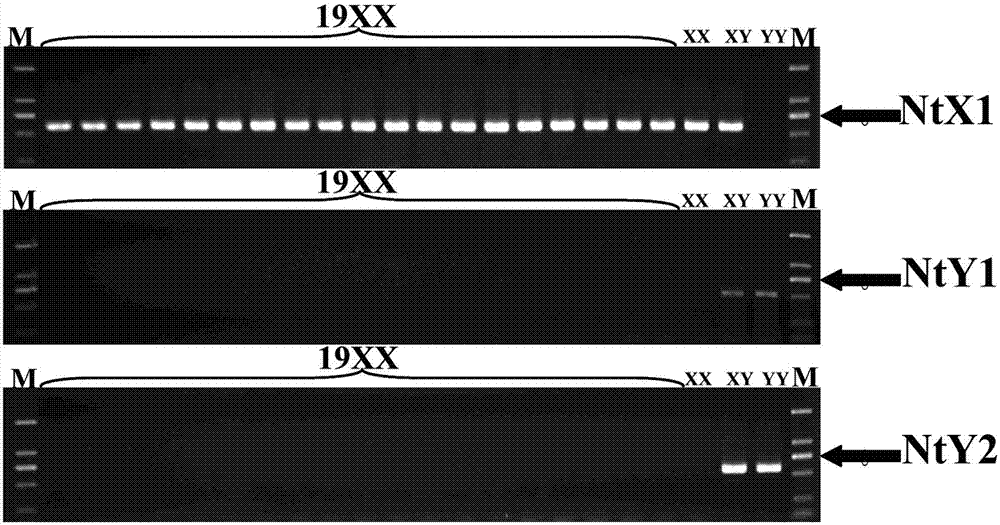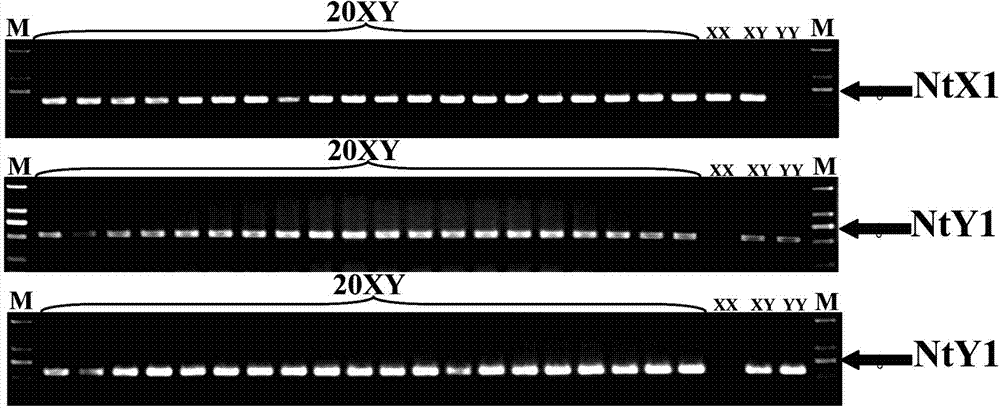Specific molecular markers of sex chromosomes of Tilapia nilotica and genetic sex identification method
A Nile tilapia and molecular marker technology, applied in the field of genetic engineering, can solve the problems of inapplicability of genetic sex identification of Nile tilapia, undiscovered sex chromosome-specific molecular markers, and heavy workload of artificial breeding, etc., reaching The effect of reducing the cost of breeding, accelerating market demand and low cost
- Summary
- Abstract
- Description
- Claims
- Application Information
AI Technical Summary
Problems solved by technology
Method used
Image
Examples
Embodiment Construction
[0021] Hereinafter, preferred embodiments of the present invention will be described in detail with reference to the accompanying drawings. The experimental method not indicating the specific conditions in the preferred embodiment is usually according to the conventional conditions, such as described in the Molecular Cloning Experiment Guide (Third Edition, J. Sambrook et al., translated by Huang Peitang et al., Science Press, 2002) conditions, or as recommended by the manufacturer.
[0022]1. Acquisition of sex chromosome-specific molecular markers in Nile tilapia
[0023] 1. Screening and cloning of Nile tilapia sex chromosome-specific AFLP markers
[0024] (1) Genomic DNA extraction
[0025] Cut 10 mg of Nile tilapia fin rays, put it into 600 μl of lysate [10mM Tris-HCl (pH8.0)+100mM EDTA (pH8.0)+100mM NaCl+5mg / ml SDS] for homogenization, and add the final concentration of 20mg / ml proteinase K and 100μg / ml final concentration of ribonuclease A (RNaseA), digested in a wat...
PUM
 Login to View More
Login to View More Abstract
Description
Claims
Application Information
 Login to View More
Login to View More - R&D
- Intellectual Property
- Life Sciences
- Materials
- Tech Scout
- Unparalleled Data Quality
- Higher Quality Content
- 60% Fewer Hallucinations
Browse by: Latest US Patents, China's latest patents, Technical Efficacy Thesaurus, Application Domain, Technology Topic, Popular Technical Reports.
© 2025 PatSnap. All rights reserved.Legal|Privacy policy|Modern Slavery Act Transparency Statement|Sitemap|About US| Contact US: help@patsnap.com



